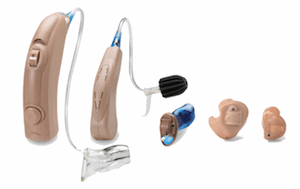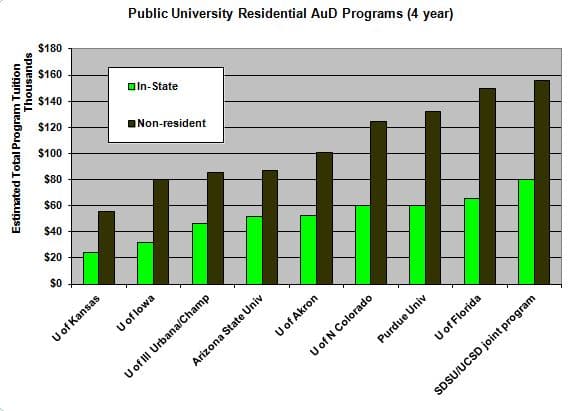“Investing in a doctoring degree in Audiology hinges on expectations and outcomes that should be anchored in real data.”
So began a previous post. The theme is picked up today by Kevin Liebe, AuD, launching a series on AuD costs, based on data we’ve been collecting from representative educational programs. You may be surprised.
HOW much does that AuD degree (really) cost?
The tab for a clinical doctorate in audiology (AuD) depends on whether you are a transitional student (distance learning), attend a private or public school, or are an in-state or out-of-state student. Readers can refer to a Bob Trayor’s ongoing series on the history of the AuD to put these educational options in context.
Our informal survey of representative schools (of 70+ in the US) finds that costs vary widely, as does accessibility to financial information. Some programs’ websites make it easy to figure out 4-year tuition and fees; others require assumptions and extrapolations based on cost per credit hour and other variables. Results and discussion in this series depend on the accuracy of our assumptions.
AuD Costs at Public Universities
Most AuD programs are housed in public universities, which are the focus of this first post. Data come from the 4-year AuD state school programs at the University of Kansas, University of Iowa, University of Illinois at Urbana-Champaign, Arizona State University, University of Akron, University of Northern Colorado, Purdue University, University of Florida and the San Diego State University/University of California-San Diego joint program.
Total program tuition rates estimated for these nine AuD programs are shown in Figure 1.
There was a four-fold difference in tuition for in-state students at different state universities. In most cases, non-residents’ costs were at least double their in-state counterparts. That’s a lot of variance, not to mention money, especially for those attending from out-of-state.
We estimate that non-resident students paid in excess of $100,000 for tuition and fees at five of the nine schools in our survey. California and Kansas were the extremes of the cost curve: non-residents at U of K got their AuDs for $20K less than in-state students at SDSU/UCSD. Maybe Dorothy was right about Kansas.
We didn’t factor in scholarships, assistant-ships, tuition waivers, or employer contributions, which would reduce the accounting costs to students. On the other hand, we did not factor in annual cost of living expenses (rent, car, computer, etc.) for those same students. Any way you slice it, it’s expensive!
Contributing factors to total education costs will be considered in subsequent posts. Eventually, there will be sufficient data to address the core issue: Is the ROI on an AuD worth the investment? Stay tuned.
Kevin Liebe, AuD, is a clinical audiologist in private practice in Richland, WA. He chairs the Government Relations Committee of the Washington State Academy of Audiology (WSAA) and has written other posts at HHTM.








Given the announcement that student loans rates will be increasing (AGAIN) this year this series is very important to pay attention too. I just graduated and carry a large student debt.